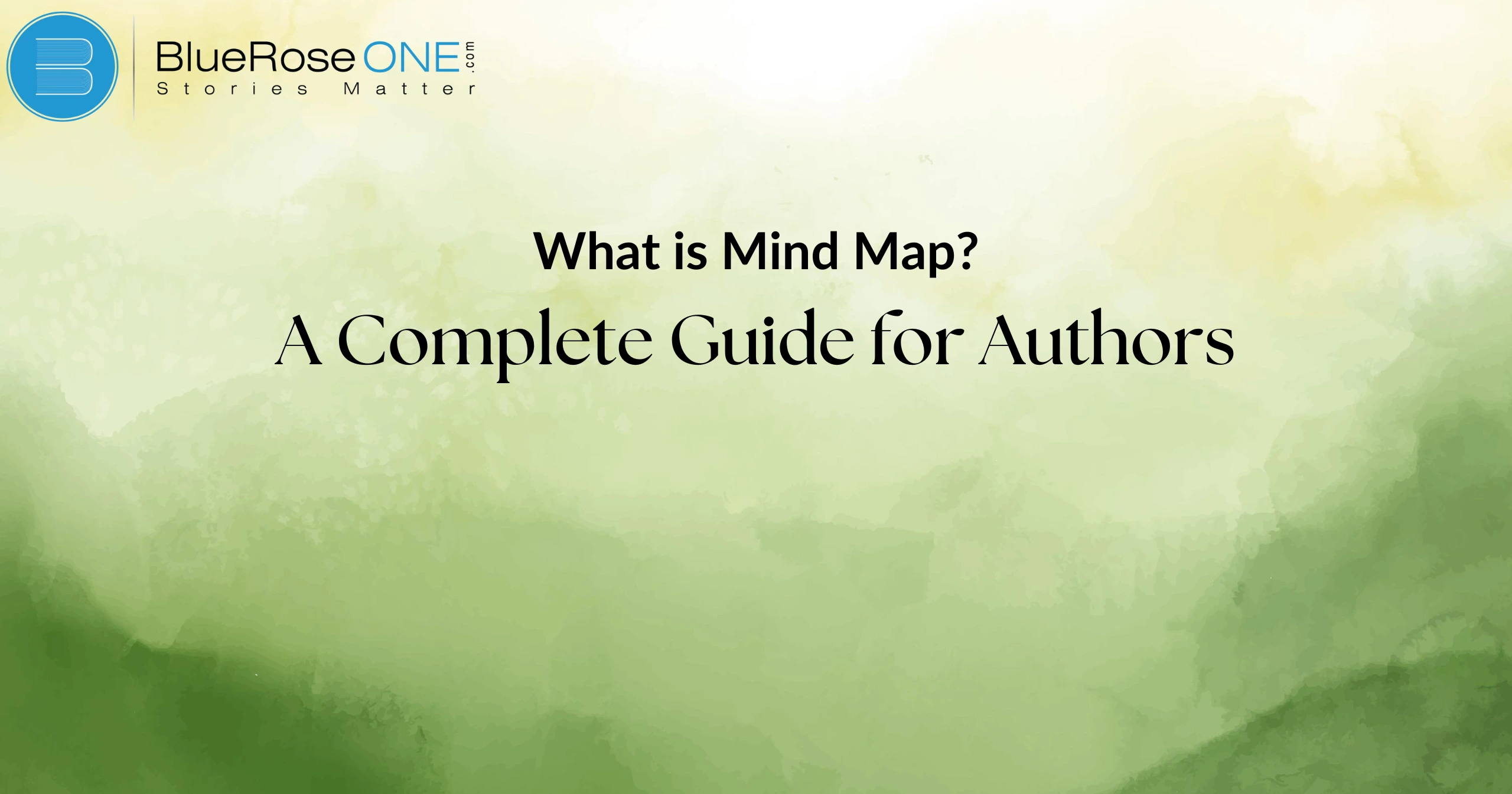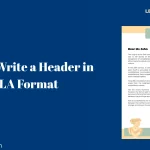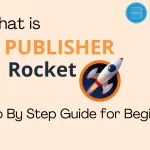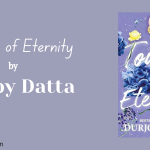When it comes to writing, how you organize your thoughts can make the difference between a disorganized manuscript and a well-structured book. Now for the mental map, a writer’s best friend. You can get clarity and direction by using this graphic brainstorming process to sketch out your tale, characters, and ideas. However, what is a mind map exactly, and how can it help you as a writer? Let’s explore this comprehensive mind mapping tutorial for authors.
What Is a Mind Map?
A mind map is a representation of concepts related to a main notion. It arranges ideas in a way that is similar to how association functions in human brains. Imagine it as a tree, with your primary idea serving as the trunk and each branch representing a related idea, concept, or subtopic. It’s similar to having a bird’s eye view of the plot, characters, and overall structure of your novel for writers.
How Does a Mind Map Work?
Mind maps make use of both organized information and visual clues to make relationships between ideas easier to understand. Every mind map begins with a core concept from which branches emanate. These offshoots dissect the main idea into more manageable, smaller components that you can continue to grow. This could entail, for authors, focussing on the concept of their work before moving on to specific plot aspects, characters, or scenes.
Why Mind Mapping Is Important for Authors
As an author, the writing process can be overwhelming with the constant flow of ideas. Mind mapping can help you organize and streamline your thoughts, allowing you to visualize your entire project before you begin. Here’s why it’s important for authors:
- Clarity: Helps clear up your ideas and organize them logically.
- Structure: Creates a framework for your plot or non-fiction arguments.
- Focus: Keeps you on track and ensures your writing has direction.
Key Elements of a Mind Map
Every mind map consists of several key elements that work together to create a visual hierarchy of your ideas:
Central Idea
The primary thought in a mind map is the notion that serves as the focal point for all other concepts. It helps arrange linked ideas and concepts and acts as the beginning point for your mind map, taking up center stage. F
or writers, organizing creative processes, laying out plots, or creating characters all depend on having a clear understanding of the main idea. This fundamental component keeps the mind map focused and graphically directs the brainstorming session towards significant results.
Branches
Branches are a crucial component of a mind map because they show the relationships between various concepts. A mind map displays related themes by branching out from the focal thought in the center. Each branch can have sub-branches, breaking down the original idea into smaller, more specific thoughts.
A mind map is a useful tool for brainstorming and outlining writing projects because it provides authors with a visual structure that makes it easier for them to organize their thoughts and understand the connections between ideas.
Keywords
Keywords are crucial for encapsulating the main concepts of any topic or idea in a mind map. They act as memory and creative triggers, making it simple for you to build on your ideas. Short sentences or significant words enable rapid reference without overpowering the visual framework.
This encourages clarity and focus, keeping your mind map organized and easy to navigate, especially when brainstorming or outlining complex subjects.
Color and Images
Colors and visuals are essential for stimulating creativity and improving memory recall in mind maps. Different colors can be used to better organize concepts and highlight relationships. Visual elements such as images, symbols, or icons can enhance the comprehensibility and retention of information.
When authors are brainstorming or organizing their ideas, the mind map becomes more interesting and useful because of the way that color coding and pictures engage both sides of the brain.
How Mind Maps Benefit the Writing Process
Enhanced Creativity
When writing, using a mind map can greatly increase creativity. A mind map assists writers in finding connections between ideas that they might not have previously recognised by visually organizing ideas. Because of its adaptable framework, which promotes brainstorming and free-flowing thought, novel and surprising ideas frequently arise. A mind map’s non-linear structure allows authors to freely explore many angles, which fosters greater creativity and more intricate plots. It’s a vital resource for authors looking for ideas.
Organized Story Structure
By graphically representing the essential components of your story, a mind map assists in the creation of an orderly story structure. Authors are able to understand how each element of the tale fits together by making connections between concepts like themes, plot points, and character development. This approach encourages clarity and supports the preservation of writing’s logical flow. By enabling writers to swiftly modify and reorganize components, mind maps make writing easier and guarantee that the plot makes sense from beginning to end.
Character Development
A great tool for character development is a mind map. Authors can build characters that are more realistic and complicated by arranging qualities, motivations, and relationships visually. You can observe how a character’s various facets relate to one another and change during the narrative by using a mind map. It is simpler to monitor character development and guarantee consistency with this method. By using a mind map, you can generate fresh concepts and create characters with nuance and complexity.
Types of Mind Maps for Authors
Authors can use different types of mind maps depending on the stage of their writing process:
Plot Mapping
An effective tool for writers to arrange the events and structure of their stories visually is a plot mind map. Writers can prevent plot holes and preserve consistency by using mind maps to see the connections between various plot aspects. The primary conflict, significant turning points, and resolution are usually outlined in this kind of mind map. It’s a great technique to divide intricate stories into digestible chunks, enabling writers to more clearly and efficiently outline their story.
Character Mapping
A specific kind of mind map called character mapping assists writers in giving their characters a thorough development. Authors can better grasp their characters’ responsibilities in the tale by graphically organizing character data including motivations, relationships, and backstory. By using this technique, authors can make links between characters and make sure that each one adds something significant to the story. Richer, more relatable characters that successfully interest readers can be created through the use of mind maps in character development.
Theme and Symbolism Mapping
Symbolism and Theme Using mapping to explore deeper meanings in their stories is a helpful approach for writers. Writers can arrange themes, symbols, and connections between them in a visual manner throughout the story by using this mind map. Authors can examine how these aspects interact and strengthen the message of the story by centering the core subject and extending out to symbols and related concepts. This clarity makes the writing more powerful and captivating for readers by ensuring that the idea is maintained.
Step-by-Step Guide to Creating a Mind Map
Step 1: Start with a Central Idea
A central notion is the first step in making a mind map that works. Your mind map’s central concept aids in the visual organization of your ideas. Put your primary idea in the middle of the page and encircle it with a circle. Make connections between similar subtopics by drawing lines from this main point. This method not only helps you organize your ideas, but it also makes it simpler to understand the connections between various ideas. An organized mind map fosters creativity and facilitates effective idea generation.
Step 2: Add Main Branches
Start by adding the primary branches to your mind map, which stand for the major concepts or ideas associated with your core idea. These branches, which radiate from the central notion, aid in the visual arrangement of your ideas. Make sure each branch makes sense in relation to the main idea by using concise words or phrases. These primary branches give your mind map an organized overview that makes it simpler to explore and develop your ideas further.
Step 3: Expand with Sub-Branches
Make sub-branches that go farther into each primary thought in your mind map to efficiently grow it. To add more specific points, start by identifying the major ideas that are associated with your core topic. Then, draw lines from these main branches. Your primary branch, “Writing Techniques,” for instance, might have sub-branches called “Character Development,” “Plot Structure,” and “Dialogue.” This approach helps you discover links between concepts and graphically arrange your thoughts, which improves your general creativity and comprehension of the subject.
Step 4: Use Visual Elements
Employ Visual Elements: Adding visual components to a mind map can greatly improve comprehension and recall. Use images, symbols, and colors to convey various concepts or topics. For example, designate relevant subtopics with red arrows and important notions with blue circles. In addition to adding interest to the mind map, this visual hierarchy makes it easier for you to see connections between concepts rapidly. Ultimately, writers can arrange their ideas in a clear and original way by using images in mind maps effectively.
Step 5: Review and Revise
Spend some time going over and editing your mind map after you’ve made it. Seek out any places that require more information or clarification. Making sure your mind map accurately conveys your ideas is dependent on this phase. It’s possible that certain branches can be simplified while others require additional information. A well-structured and well-flowing mind map is enhanced by revision, which makes it an effective tool for author brainstorming and idea organization.
Mind Mapping Tools for Authors
Freehand Mind Maps
Freehand mind maps are a flexible and creative way for authors to visualize their ideas. Unlike traditional mind mapping software, freehand maps allow you to draw and doodle your thoughts on paper or a digital tablet. This hands-on approach encourages spontaneous connections and unique concepts, making it easier to explore different angles of your story. Using a mind map can help authors organize their plots, develop characters, and brainstorm themes in a fun and engaging way.
Digital Tools: MindMeister, XMind, etc.
XMind and MindMeister are two useful mind mapping programs for writers who want to arrange their ideas graphically. Using a mind map during brainstorming sessions helps authors dissect large ideas into smaller, more manageable chunks. These digital tools help writers produce organized and lucid outlines by providing features like cloud storage, customisable templates, and collaborative sharing. A more coherent story can be produced by authors by employing mind maps to increase creativity, shorten the writing process, and improve organization.
Mind Mapping Tips for Authors
- Start Small: Begin with simple maps and gradually add complexity as you get more comfortable with the process.
- Be Flexible: Your mind map doesn’t have to be perfect. It’s a dynamic tool meant to evolve with your ideas.
- Use It Throughout the Process: Mind maps can be useful in brainstorming, outlining, and even during revisions.
Integrating Mind Mapping with Other Writing Techniques
Using a mind map in conjunction with other writing strategies helps improve structure and originality. Writers can explore various perspectives and physically represent ideas by integrating brainstorming and mind mapping. Furthermore, by combining a mind map with outlining strategies, writers may organize their work and make sure all the important topics are covered. This integration facilitates deeper links between ideas and helps to clarify thinking, which facilitates the development of a cogent narrative and enhances the writing process as a whole.
Conclusion
Mind mapping is a powerful tool for authors, helping them organize ideas, develop characters, and structure their narratives. Whether you’re plotting a novel or outlining a nonfiction book, mind maps can bring clarity and creativity to your writing process.
















